Day 6 - From "hard to pronounce" to "do these letters make sense?"

In more concrete terms today's trip lead from Stykkishólmur to Sauðárkrókur. And we are not even at the "fell asleep on the keyboard" names (those are still to come).
The first destination, after a short stop at the post office, Eiríksstaðir (translates to Erik's Farm). This is a lovely reconstruction of a 10th century longhouse, the type of house the settlers of iceland built during the first 200 years after arriving at iceland.
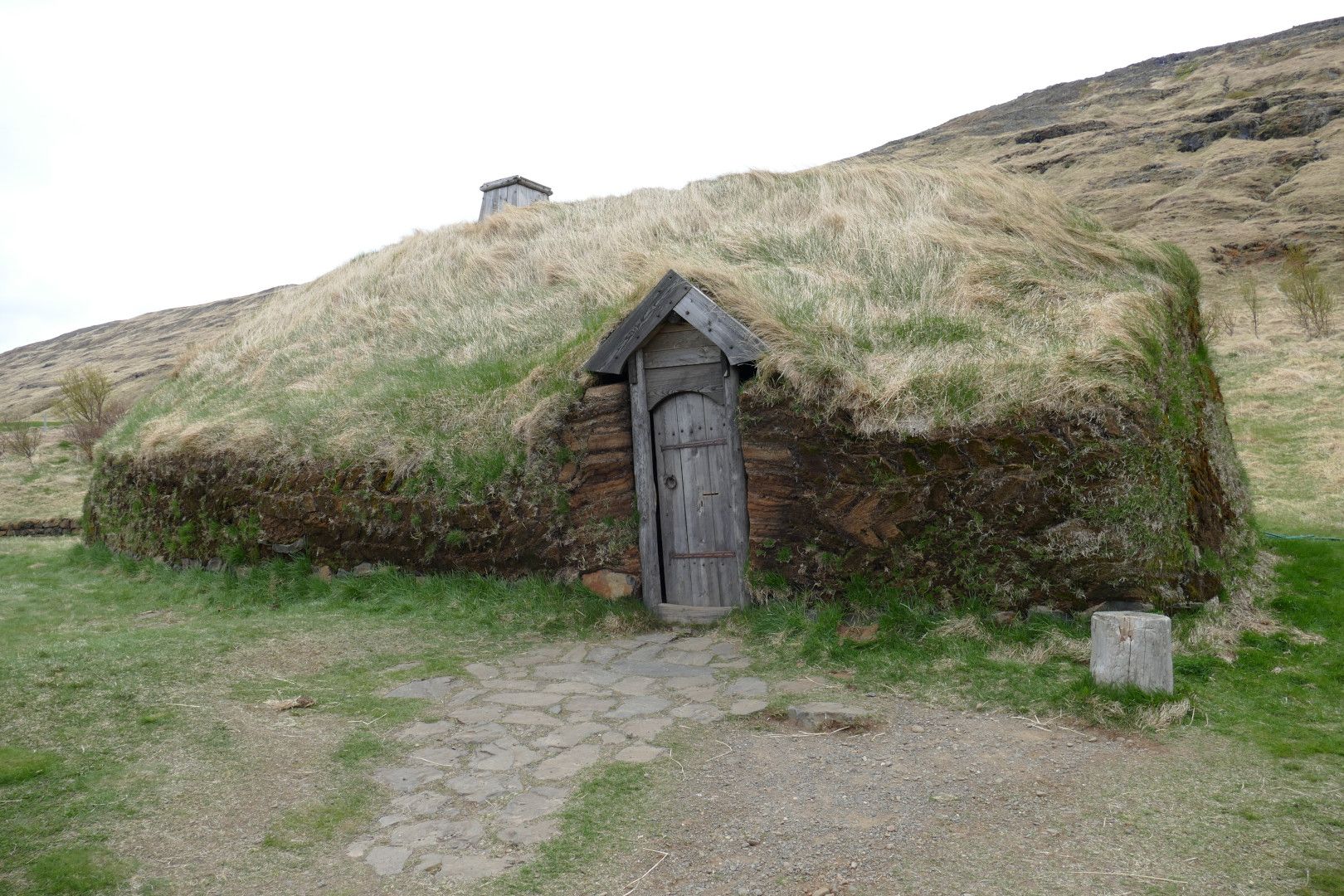
The house is structured into three areas, on the right there is the entry and general storage area, the middle, up to nearly the left outside wall is the main living, sleeping, cooking, ...whatever else 10th century people did in their homes... area. To the far left is a small area reserved for food storage.
The only area in the house that gets any light is the living room as light shines through the chimney and the fireplace that is right under the chimney.
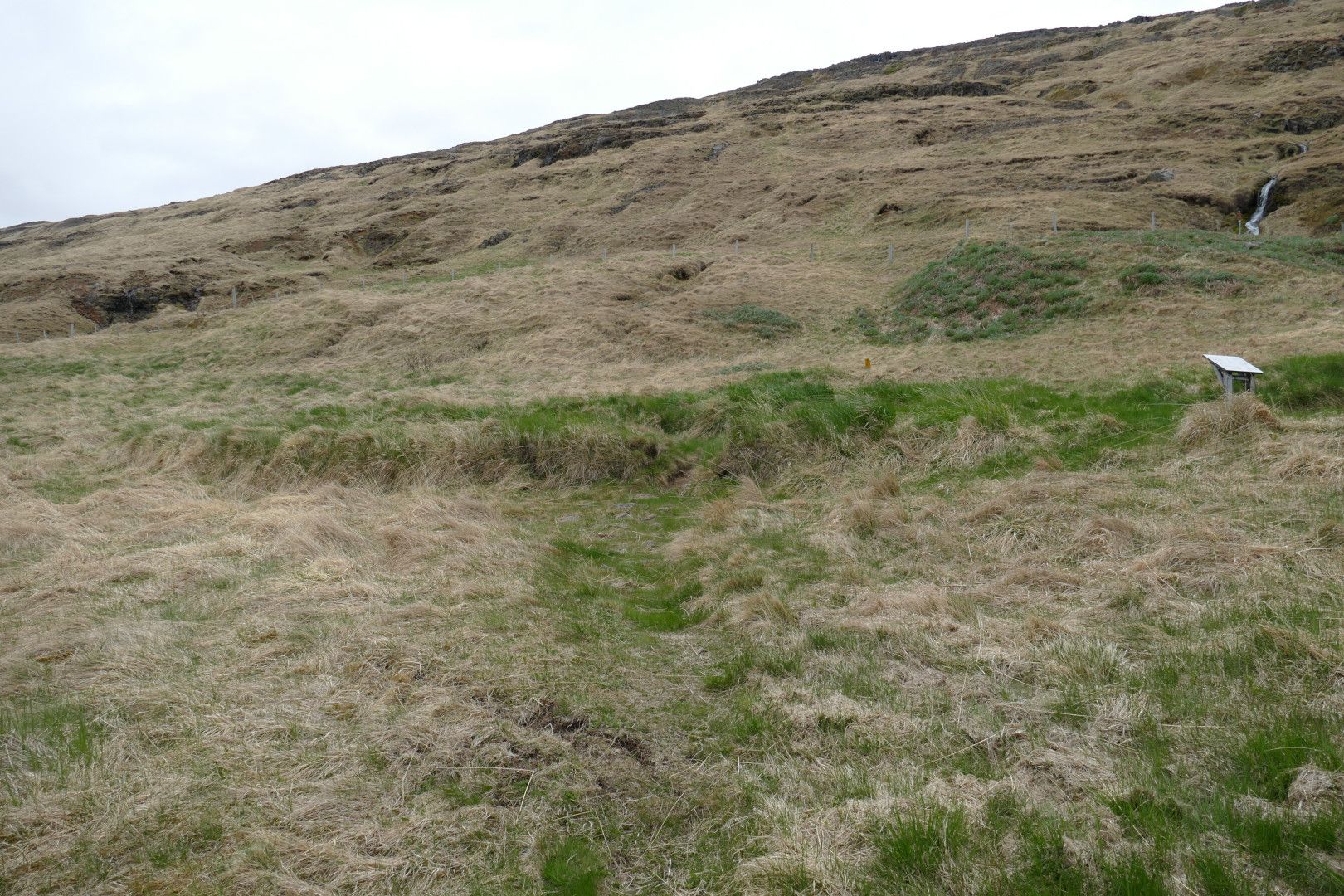
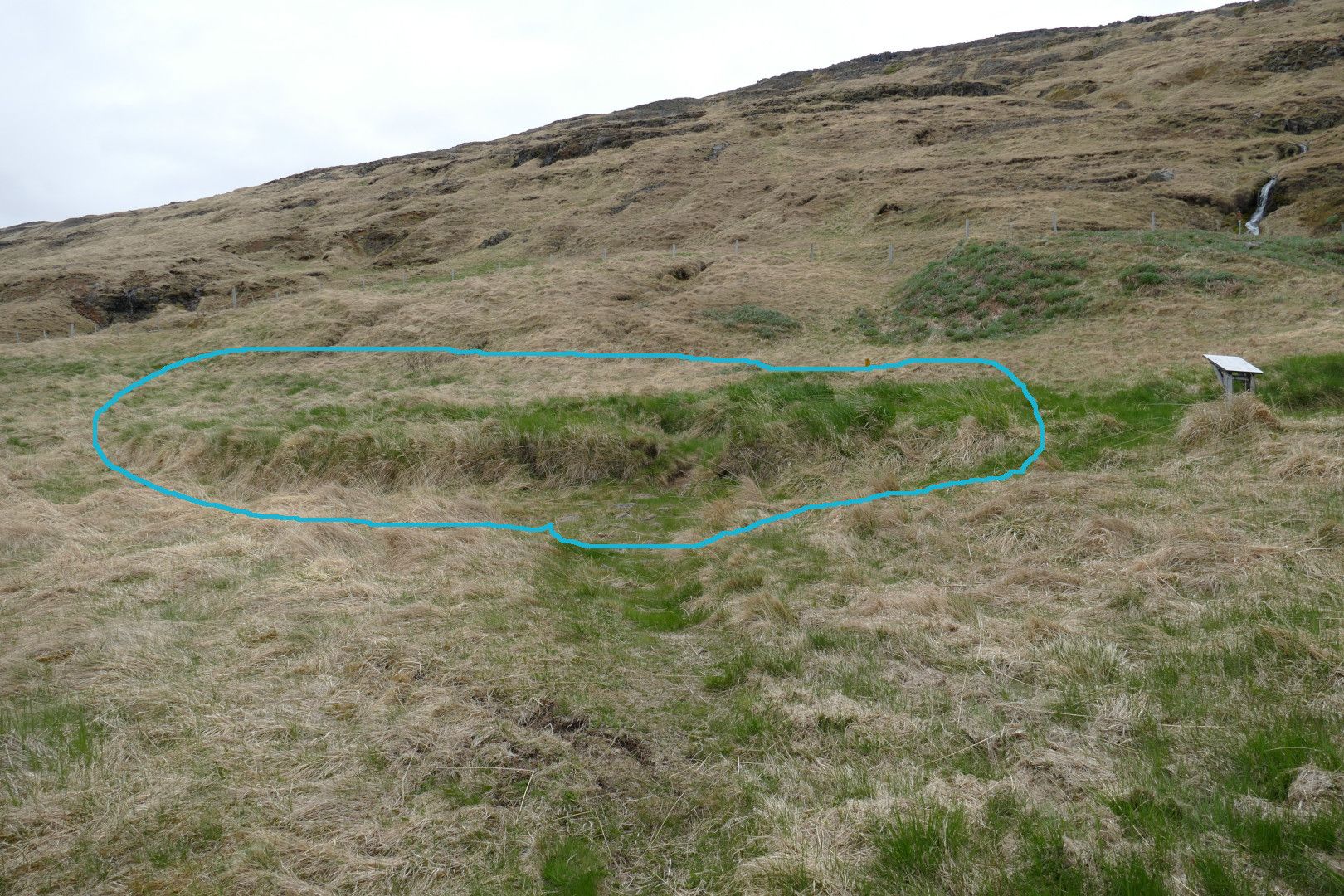
As archeological findings go there is not relly much to see at the original site, except for the outlines of the building (marked in the right picture that you have any chance).
As a nice bonus to the replica of the old house and tour guides in period costumes telling visitors of the life in those days, this farm has a historic significance. Erik, whose farm this was refers to Erik the Red, himself an important figure in Icelandic history and culture, and father of Leif Erikson (this time the english/german spelling of the name), the first European that was documented to have set a foot on North American land.
If you wonder, how we know that this farm belonged to those important figures (I surely did), the guids told us that icelandic culture has two very important aspects that are more or less unique to Iceland. The first is documenting history in the form of the famous Sagas (written stories of the times of settling Iceland, that are so detailed and confirmend in their accuracy that children in Norway learn history with those stories). The second aspect is documenting and researching family connections, also back to the time of icelandic settlement in the 9th century. This genealogical data shows that the farm belonged to the family of Erik the Red.
After this impressive glimpse into the past I learned the hard way that google maps navigation is not the best choice for finding your way along small icelandic roads. I can accept that maps tries to find a way on any public road, including Icelands infamous F-Roads but the route google chose for me showed a "normal" gravel road (suitable for all cars, if you're brave enough). The problem with this assessment was that half of the route was in fact a F-Road (4WD only, experience in 4WD driving is at least a nice to have) and that the road was closed because it was not yet made passable after the winter.
This meant that after hitting the very persuading "you shall not pass" warning signs of the closed road that I had to track back to the next major road and take another route.
Eventually I found my way to my next destination, Kolugljúfur. This is a waterfall and a canyon where the river has dug itself around 50 meters deep into the ground.
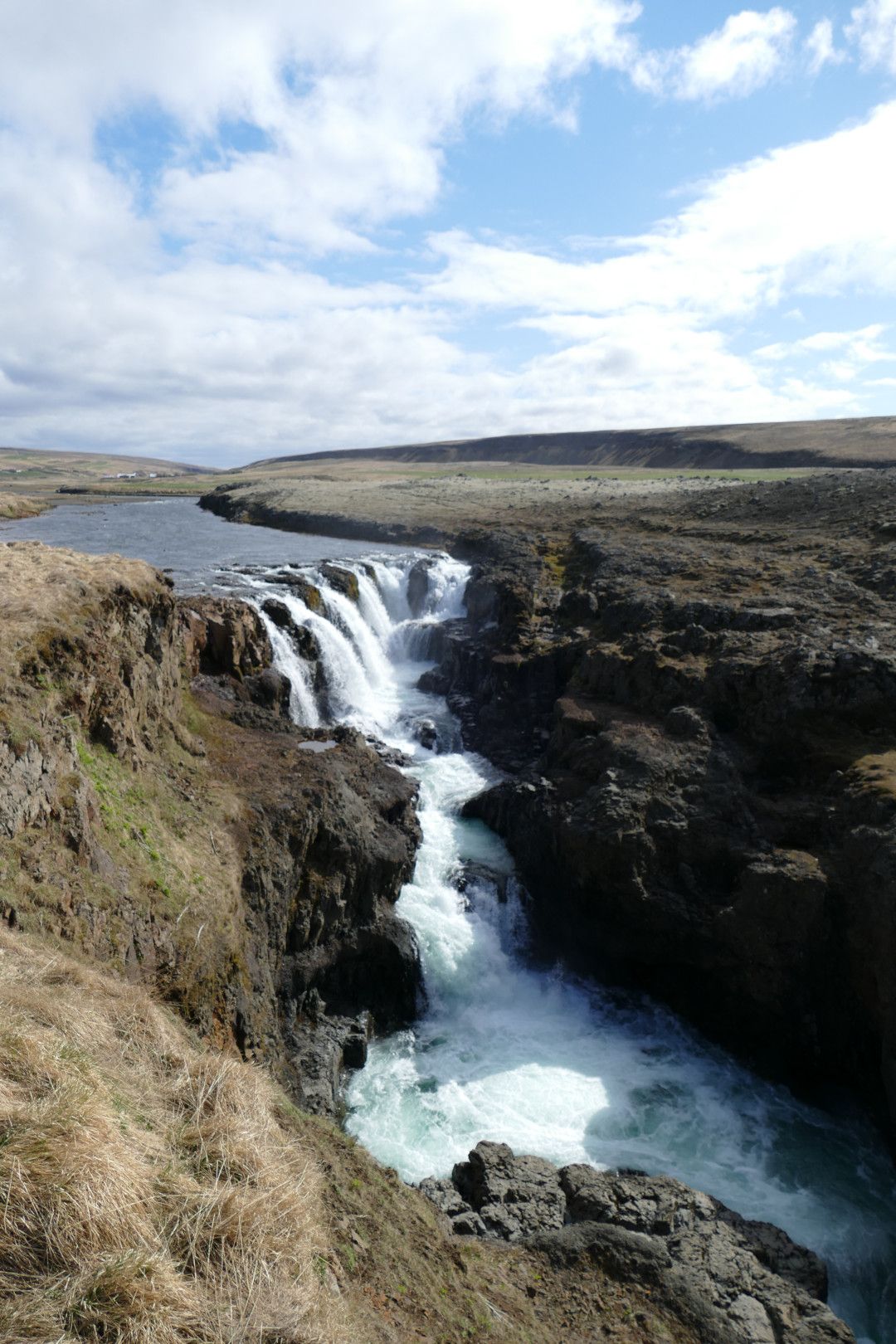
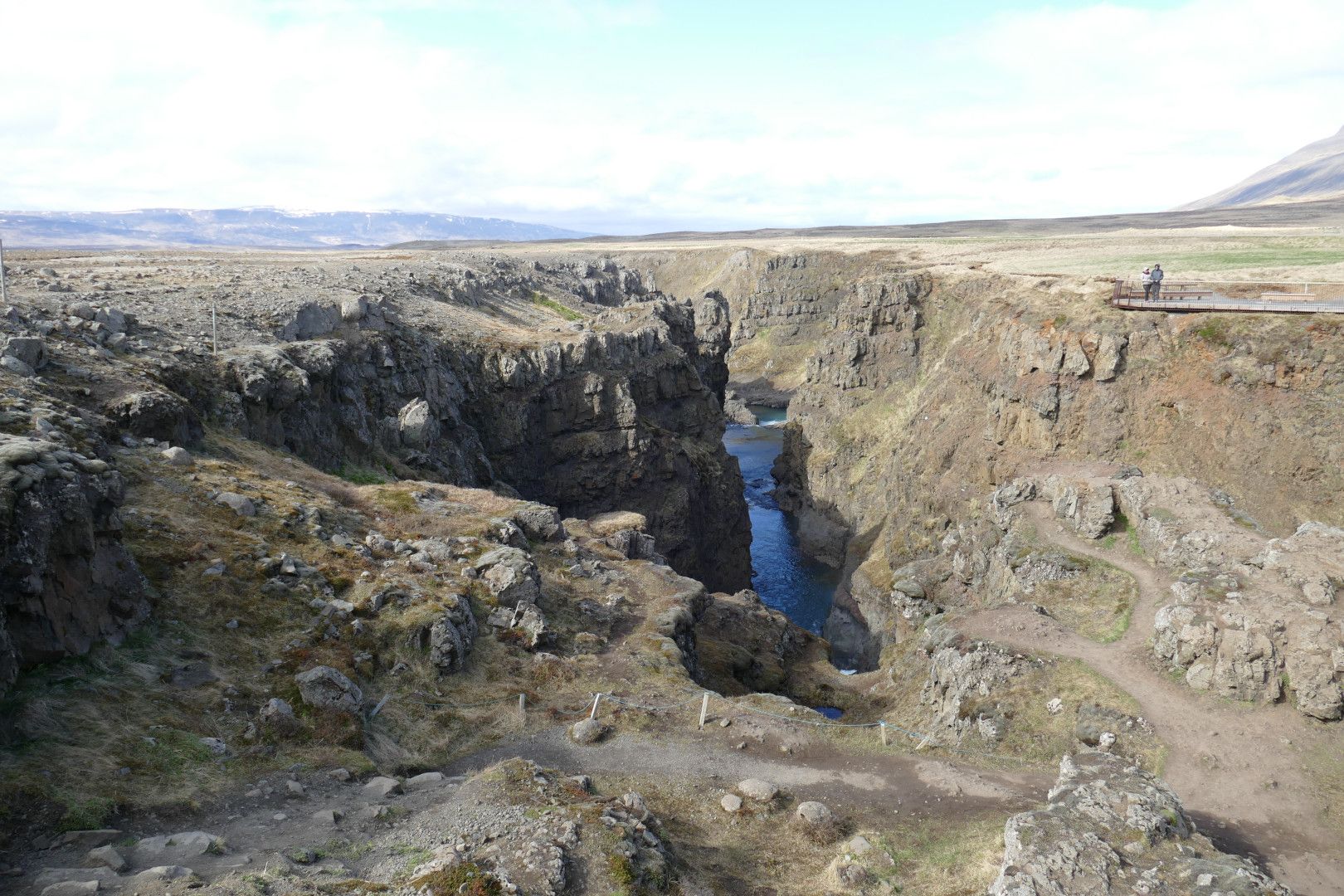
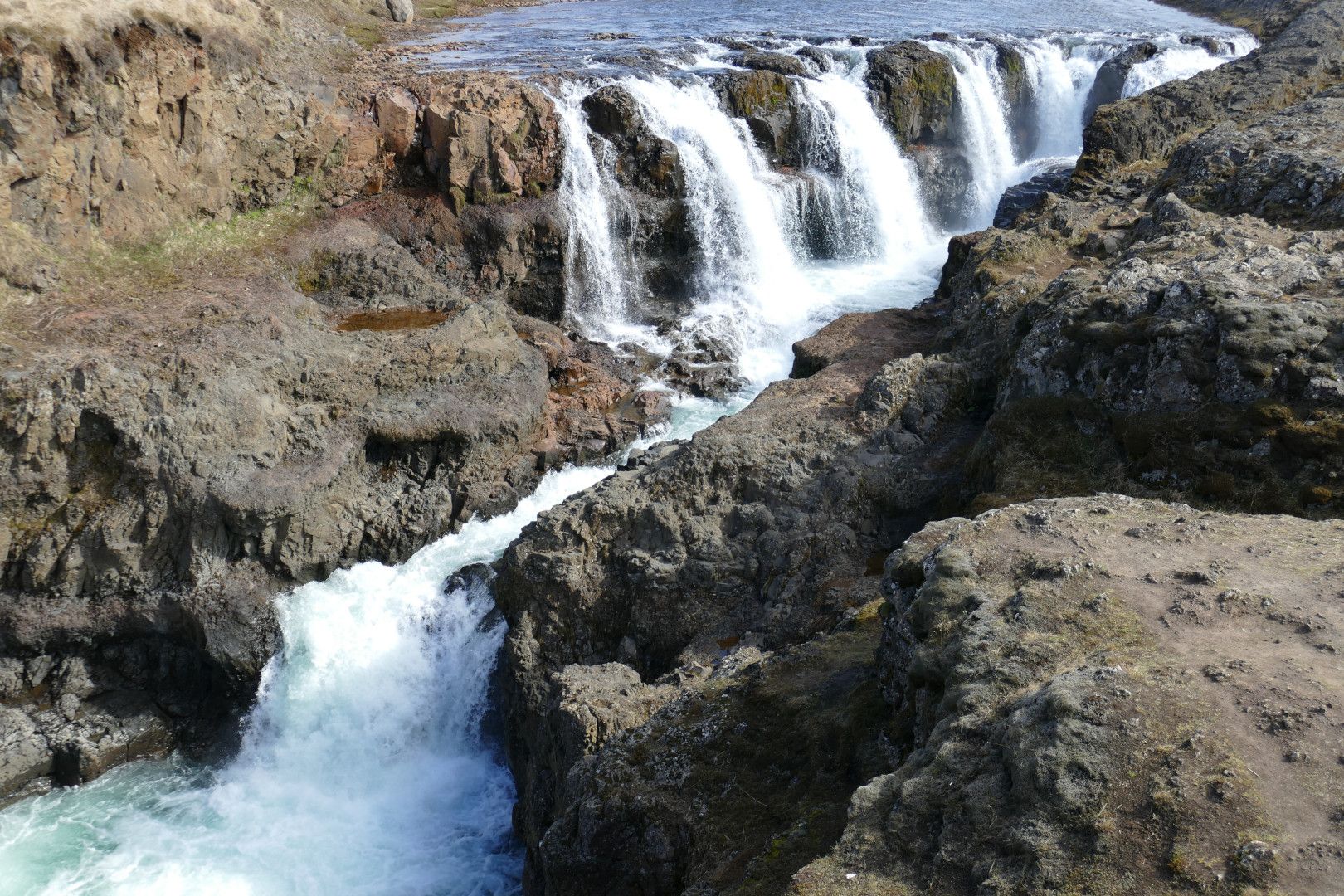
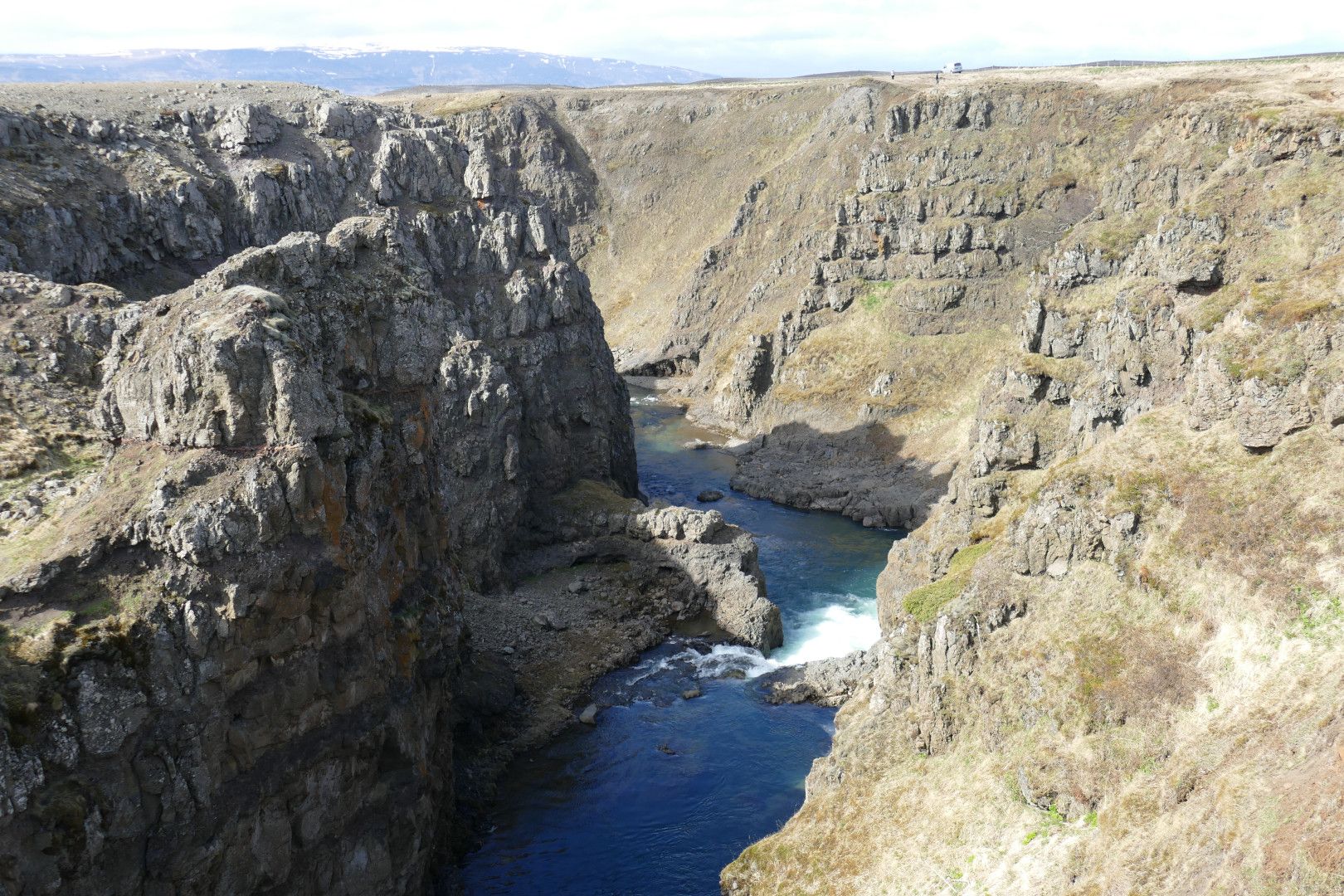
After this stop, it was only a short hop to my next over-night location in Sauðárkrókur.